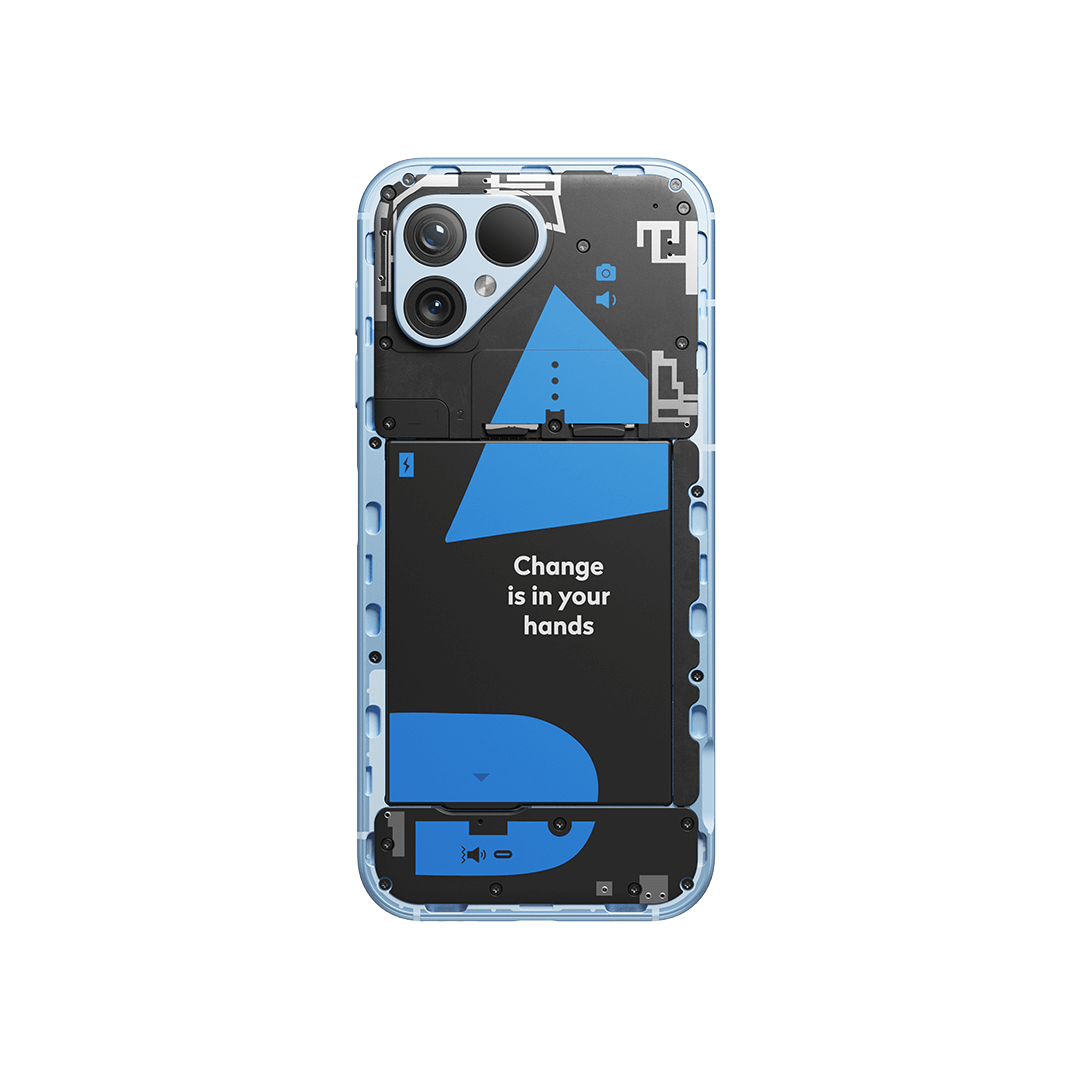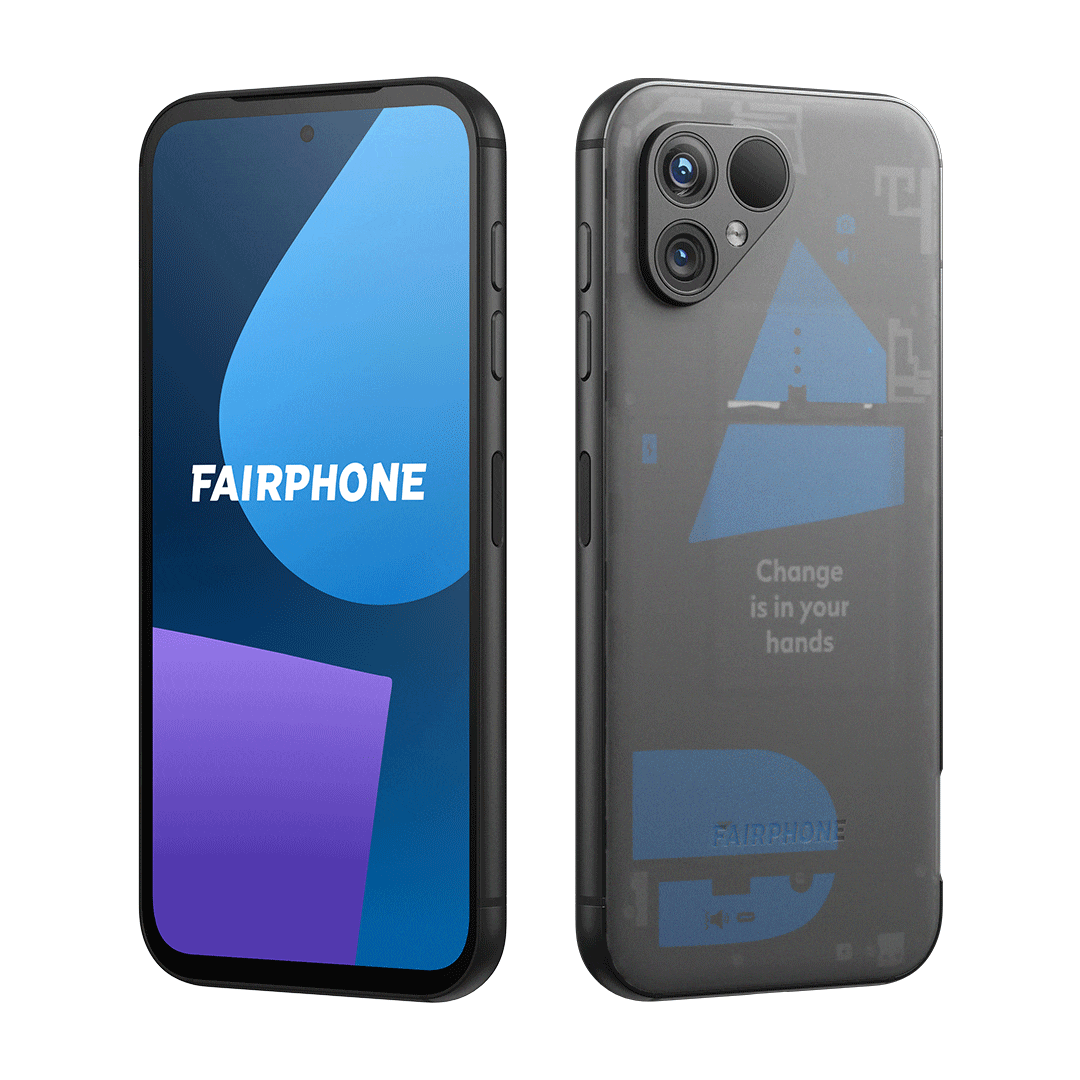The evaluation of the Fairphone 5 may lean less toward a traditional review and more toward contemplation about our trajectory in eco-conscious thinking. The case of the Fairphone 5 sits somewhere in between, perhaps even as a slightly rugged endeavor in green thinking.
Technology and Sustainability
As known, the greenest technology involves devices not produced at all. However, if the irresistible urge to digitally interact with strangers from far-off places while seated on your throne is paramount, then a smartphone becomes the logical choice. What’s even more remarkable is the longevity aspect, where this smartphone isn’t just a 2-3-year commitment but potentially a companion for 7 or even 8 years. Here, the Fairphone 5 flexes its muscles in the marathon race by offering the ability to replace the battery within minutes. Additionally, with ordinary Phillips screws, nearly everything that might break or malfunction can be easily replaced.

On the flip side, opting for the latest or previous-generation iPhones guarantees almost equally extensive and definitely better software support. iPhones are reasonably repairable (though not always at home and with your own hands), but services are widely accessible without exorbitant prices. Despite its cost being closer to the budget end of flagship devices, the Fairphone 5 falls into the mid-range (or even lower) category in terms of cameras and other key specifications. $770 for a mid-range Android device might be a tough sell, it’s hard to deny.
Technical Specifications of Fairphone 5
| Specification | Details |
| Operating System | Android 13, supported until 2031 |
| Display | 6.46-inch OLED, 1224 x 2700, 90 Hz refresh rate, 880 cd/m² max brightness, Corning Gorilla Glass 5 |
| Processor | Qualcomm QCM6490 (6 nm), octa-core: 1×2.7 GHz Cortex-A78 & 3×2.2 GHz Cortex-A78 & 4×1.9 GHz Cortex-A55, Adreno 643 GPU |
| RAM | 8 GB |
| Storage | 256 GB UFS 2.2 |
| Connectivity | Wi-Fi 802.11 a/b/g/n/ac/6e, dual-band, Wi-Fi Direct, Bluetooth 5.2 (A2DP, LE), NFC, USB Type-C 2.0, 2G/3G/4G/5G |
| Positioning | GPS, GLONASS, GALILEO, BDS |
| Additional | microSDXC expandable, IP55 water resistance |
| Cameras | Rear: 50 MP, f/1.9, 1/1.49″, 1.0µm, PDAF, OIS main camera + 50 MP, f/2.2, 1/2.51″, 0.7 µm, PDAF, TOF sensors; 4K@30fps, 1080p@30/60/120fps, gyro-EIS video + Front: 50 MP, f/2.5, (wide), 1/2.76″, 0.74 µm |
| Dimensions & Weight | 161.6 x 75.8 x 9.6 mm, 212 g |
| Battery | Li-Ion 4200 mAh, 30 W wired charging, user-replaceable battery |
| Price | $770 |
Read Also: Sony Xperia 5 V Smartphone Review – A Companion On An American Journey
Fairphone 5 Design and Build
The Fairphone 5 isn’t poorly constructed, but it’s essential to note that the user-removable back makes the smartphone not only feel more plastic in hand but also less resistant to moisture and dust. While a plastic back cover for a $770 phone might not concern me much, its resistance to moisture would prompt me to reconsider before purchasing the Fairphone 5. The manufacturer claims the phone has IP55 protection and is certified in ICE 60058-2-31 (1.8m); MIL-810H (1.5m) drop tests.

Surrounded by a substantial metal frame, the Fairphone 5 boasts a durable and elegant screen protector upfront, while the back is made of plastic that doesn’t seem to snugly fit into the phone’s internals. The fingerprint reader is moderately fast and just about average in accuracy, making it one of the weaker fingerprint readers I’ve experienced.
However, in the realm of misguided environmental protection, the Fairphone 5 box includes only the phone itself. No charger, no USB cable, no silicone case. Quite austere for a $770 smartphone. Of course, you can purchase all these “essentials” separately. Yet, there’s a calculated move to ensure that the average Fairphone 5 buyer doesn’t end up needing a new USB cable or, heaven forbid, a screen protector.
Audio, Interface, and Display of Fairphone 5
Audio
The stereo speakers on the Fairphone 5 leave much to be desired. They sound downright appalling—like echoes from an empty cavern.
Interface
In terms of the interface, there’s nothing particularly unique; the Fairphone 5 offers a clean Android experience with a couple of Fairphone apps, which could have been omitted. There’s no clear indication yet on when the Fairphone 5 might receive Android 14. However, Google has been lackluster this year in delivering the latest Android versions.

 Display
Display
Regarding the display, the smartphone boasts a decent screen, but its heavily rounded corners might make certain apps or games less user-friendly. Otherwise, the Fairphone 5’s display seems quite decent, but by today’s standards, it’s not particularly bright. It might be insufficient with its maximum brightness of 880 cd/m², especially in summer. Samsung Galaxy S23 series offers a maximum brightness of 1750 cd/m², while some of the freshest models reach a peak brightness of 2000 cd/m². In terms of price, the comparably priced Xiaomi 13T has a screen brightness of 1200 cd/m².

Performance and Cameras
The Fairphone 5 employs the Qualcomm QCM6490 (6 nm) processor. As it seems, these slightly technical Qualcomm processors with a four-digit number in their name aim for extended support but lack significant power. For instance, the AnTuTu test indicates that the flagship Qualcomm Snapdragon 8 Gen 2 processor scores approximately 1,450,000 points, whereas the Fairphone 5 manages barely half of that. Similarly, the Geekbench test shows about half the performance compared to what one might expect from the Snapdragon 8 Gen 2 processor.

In daily use, the Fairphone 5 doesn’t exhibit any terrible lags. Quite the opposite—it feels fairly spry at the moment. However, the question remains about its performance expectations over several years. Speculating on the promised lifespan of 2031 for the Fairphone 5 isn’t something I’d venture into right now.
Fairphone 5 Review Conclusion
Fairphone 5, in essence, seems reasonable but simultaneously expensive in its endeavor toward a greener future. It promises all sorts of software support miracles until 2031, but there’s a ‘but’. Apple remains unclear in its commitments, offering approximately 5 or 6 years of iOS updates while Samsung, Pixel, partially Xiaomi, and others promise support for 4 years or more, which aligns with a reasonable lifespan of a smartphone. However, it’s not always clear which phones from these brands will genuinely receive such extensive support. With Fairphone, everything seems clear and specific in this regard.

In my view, Fairphone 5’s biggest downside lies in its start with mediocre hardware and very subpar cameras, placing it in an unavoidably poor situation compared to Apple, Samsung, and partially Xiaomi, which usually come with the best and fastest hardware. However, one should consider the prices—Samsung’s flagship is pricier, Xiaomi offers a similar price, but there are nuances that not everyone likes. Yet, Xiaomi provides a charger with the device, while Samsung at least includes a USB cable.

If one desires to be green and partially unique, then Fairphone 5 might just be the right fit! Opt for the semi-transparent version immediately; it looks intriguing and will likely spark as many conversations as a vegan diet. Personally, I have no objections to a greener approach unless it comes with an extra cost. A slight premium—maybe, but $50 for a screen protector… that’s the realm of Apple fanatics.




 Display
Display



